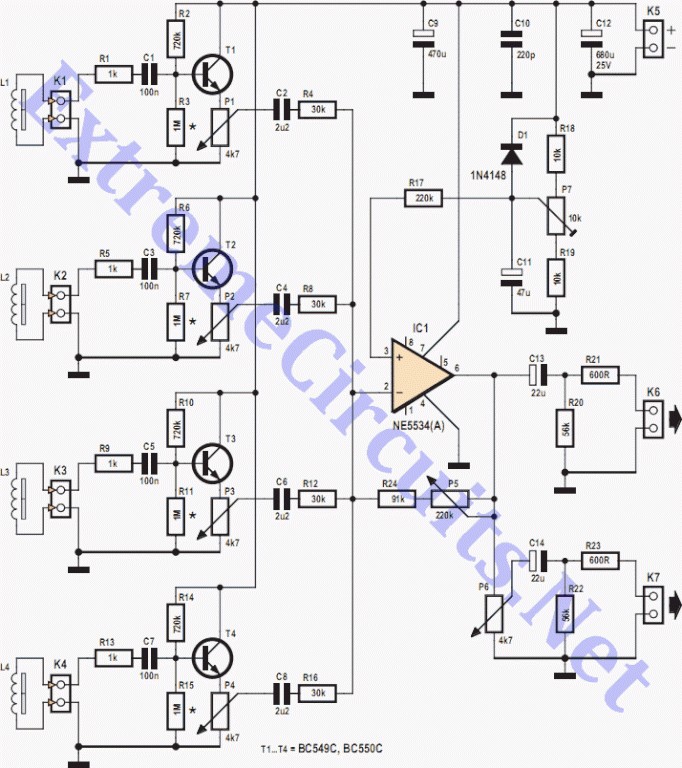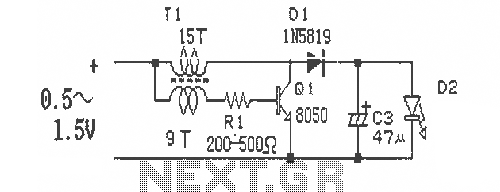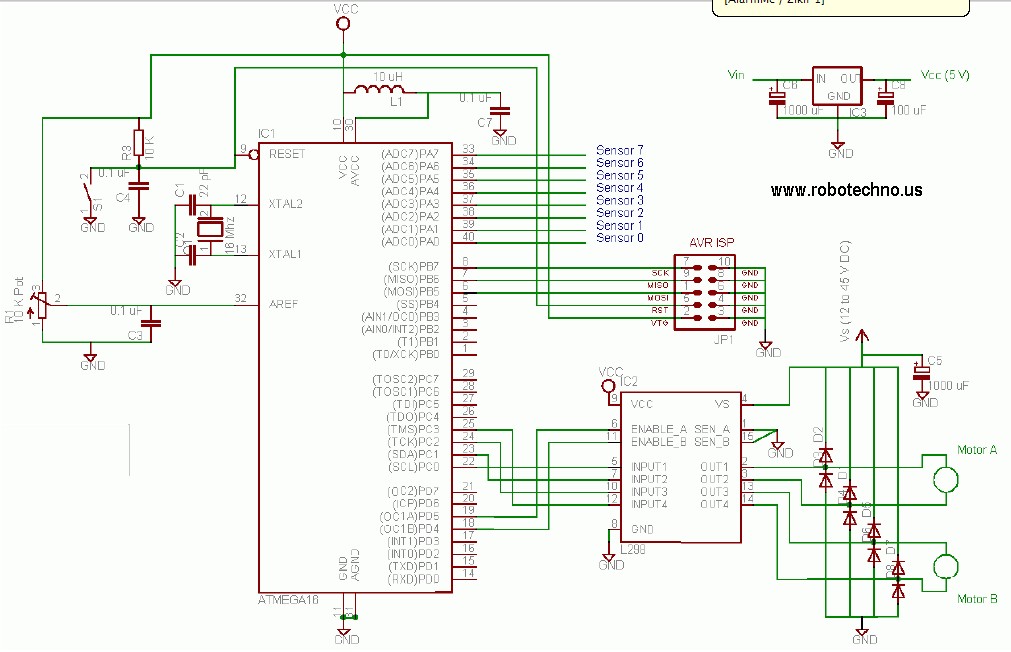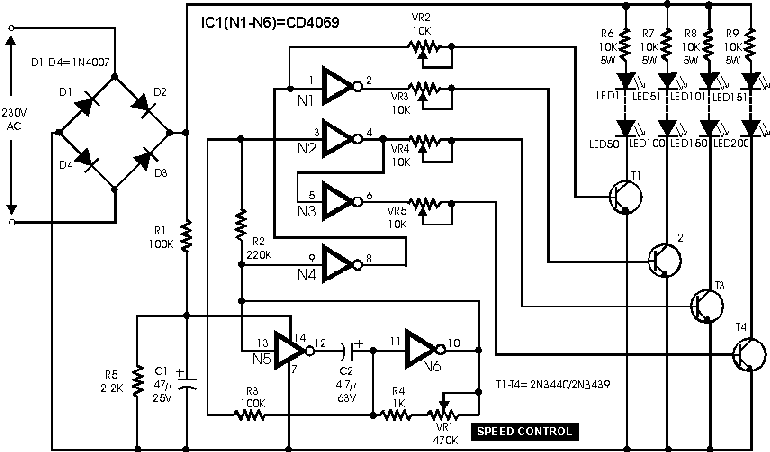
LED Flash Driver with HT2050
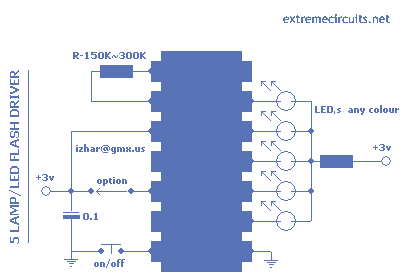
This circuit is based around HT2050 manufactured by HOLTEK semiconductors. It is a low cost, low-power C-MOS LSI designed for lamp and LED flash driver. It requires minimum external components. You can operate it with just two AAA cells or a 3V battery. The circuit has five flash outputs with 10mA drive capability that can implement random or sequence flashing functions controlled by one option pin. It only requires one external resistor for typical application. It is very suitable for the use of the flash products such as disco glasses, disco hats, gift cards, Christmas decorations, and so forth.
The HT2050 is an integrated circuit specifically designed for driving lamps and LEDs in various applications, particularly those requiring flashing effects. The device is characterized by its low power consumption, making it ideal for battery-operated devices. The circuit operates efficiently at a voltage level of 3V, which can be supplied by two AAA batteries, ensuring convenience and accessibility for users.
The circuit features five output pins, each capable of delivering a current of up to 10mA. This current rating allows for the direct connection of standard LEDs without the need for additional amplification stages, simplifying the overall design. The outputs can be configured to produce flashing patterns, either in a random sequence or a predetermined order. This functionality is controlled via an option pin, which can be toggled to select the desired flashing mode.
In terms of external components, the circuit requires only one resistor, which is typically used to limit the current flowing through the LEDs to prevent damage and ensure longevity. This minimalistic approach to component requirements not only reduces the overall cost of the circuit but also enhances its reliability and ease of assembly.
The HT2050 circuit finds extensive applications in decorative and novelty items, such as disco glasses, hats, gift cards, and Christmas decorations. Its versatility and simple operation make it a popular choice among hobbyists and manufacturers alike. The ability to create engaging light displays with minimal complexity aligns well with the growing demand for interactive and visually appealing products in the market.This circuit is based around HT?2050 manufactured by HOLTEK semiconductors. It is a low cost, low-power C-MOS LSI designed for lamp andLED flash driver. It requires minimum external components.You can operate it with just two AAA cell or 3v Battery.Circuit has five flash outputs with 10mA drive capability that can implement random or sequence flashing function controlled by one option pin.It only requires one external resistor for typical application. It is very suitable for the use of the flash products such as disco glasses, disco hat, gift card, X?mas decoration and so forth.
🔗 External reference
The HT2050 is an integrated circuit specifically designed for driving lamps and LEDs in various applications, particularly those requiring flashing effects. The device is characterized by its low power consumption, making it ideal for battery-operated devices. The circuit operates efficiently at a voltage level of 3V, which can be supplied by two AAA batteries, ensuring convenience and accessibility for users.
The circuit features five output pins, each capable of delivering a current of up to 10mA. This current rating allows for the direct connection of standard LEDs without the need for additional amplification stages, simplifying the overall design. The outputs can be configured to produce flashing patterns, either in a random sequence or a predetermined order. This functionality is controlled via an option pin, which can be toggled to select the desired flashing mode.
In terms of external components, the circuit requires only one resistor, which is typically used to limit the current flowing through the LEDs to prevent damage and ensure longevity. This minimalistic approach to component requirements not only reduces the overall cost of the circuit but also enhances its reliability and ease of assembly.
The HT2050 circuit finds extensive applications in decorative and novelty items, such as disco glasses, hats, gift cards, and Christmas decorations. Its versatility and simple operation make it a popular choice among hobbyists and manufacturers alike. The ability to create engaging light displays with minimal complexity aligns well with the growing demand for interactive and visually appealing products in the market.This circuit is based around HT?2050 manufactured by HOLTEK semiconductors. It is a low cost, low-power C-MOS LSI designed for lamp andLED flash driver. It requires minimum external components.You can operate it with just two AAA cell or 3v Battery.Circuit has five flash outputs with 10mA drive capability that can implement random or sequence flashing function controlled by one option pin.It only requires one external resistor for typical application. It is very suitable for the use of the flash products such as disco glasses, disco hat, gift card, X?mas decoration and so forth.
🔗 External reference
